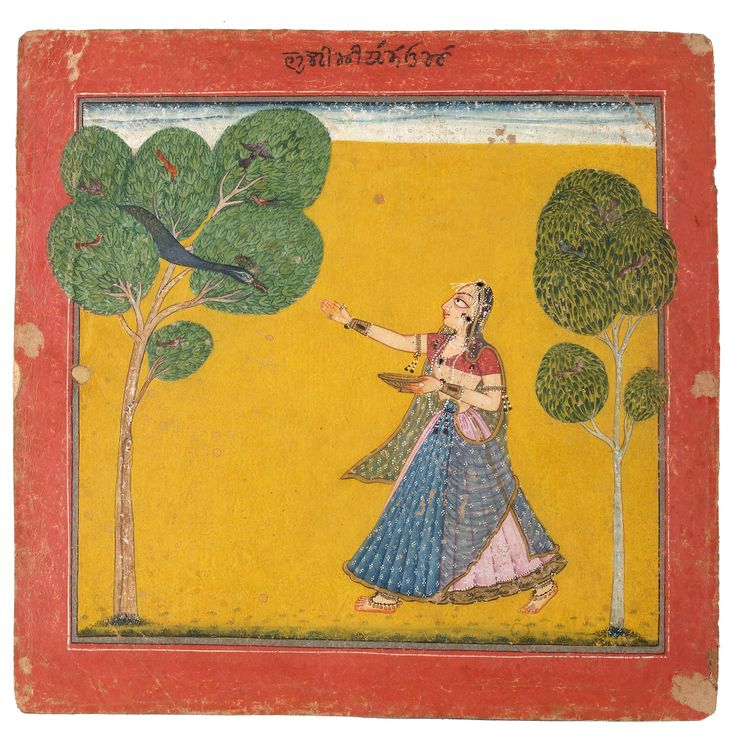Lot 38 AN ILLUSTRATION TO A RAGAMALA SERIES BASOHLI, NORTH INDIA, CIRCA 1680
Opaque watercolor, gold, and ink on paper.
This captivating Basohli painting exemplifies the vibrant and expressive style of the early Pahari school, renowned for its bold use of color, strong outlines, and emotional intensity. The composition centers on a lady, likely a nayika (heroine) from Indian poetic tradition, seated gracefully on a carpet, besides a lake adorned with pink lotuses. She is dressed in a richly detailed costume, featuring a deep red skirt, a yellow blouse, and a translucent veil, her attire accentuated with gold jewelry and intricate patterns. Her serene expression and delicate posture convey a sense of languid romance, a common theme in Basohli art inspired by the Rasikapriya or Gita Govinda texts.
A white bird, possibly a crane, holding a small object in its beak, adding a symbolic element often associated with love or longing in Indian iconography. The background is a vivid green, with stylized trees bearing custard apples (sitaphal), their textured forms rendered with meticulous detail. A patterned carpet with blue and yellow floral motifs lies beneath the tree, and a narrow strip of water at the bottom suggests a natural setting, typical of Basohli landscapes. The painting is framed by a characteristic red border, a hallmark of the Basohli school, which enhances its visual impact. The use of flat planes of color, minimal shading, and a focus on decorative elements reflects the early Pahari aesthetic, blending devotional and romantic themes with artistic innovation.
24.5 by 23 cm.
PROVENANCE
Private collection, Germany
CATALOGUE NOTE
This piece is a fine example of Basohli’s early phase, before the softer influences of the Kangra school emerged in the 18th century. The painting’s focus on a solitary female figure and symbolic elements like the bird and a tree aligns with the school’s tradition of illustrating romantic and devotional narratives, often tied to the Vaishnava themes of love and separation. ( refer lot no-26 sold for 161,000 GBP , 25 May 2017 Christies)


